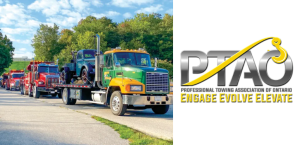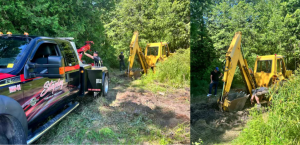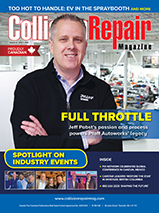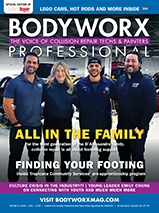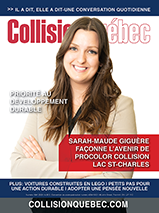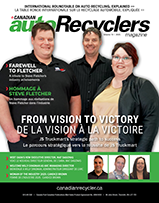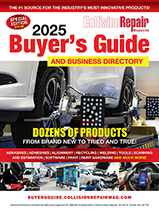By Andrew ArdizziTruro, Nova Scotia–June 19, 2013–When people are unsure of where they can park, that lack of clarity often leads to their parking their vehicles in tow-away zones without realizing it. That simple deficiency in awareness creates the potential for a confusing situation between tow truck drivers and motorists. That lack of communication was evident on June 11 during a Nova Scotia Community College convocation ceremony at the Rath Eastlink Community Centre (RECC). During the ceremony, about 30 vehicles were ticketed and four were towed away resulting from what’s been considered a perceived lack of communication between local authorities and RECC staff. Much of the confusion stems from residents parking their vehicles to within 150 metres of Colchester East Hants Health Authority’s helipad. This was an issue because having cars parked too closely to the helipad made it unsafe to land helicopters in the landing zone in an emergency situation. Mackenzie Towing Services was the local tow truck company that removed the four vehicles from the no parking zone. Jean MacKenzie, the owner of the towing company, says the heart of the issue is simply that the health centre’s helipad had not until recently been certified, a fact that had allowed citizens to park in the now illegal parking area for hockey games and other community events. It was only two weeks prior to the convocation ceremony that the helipad became certified, a fact that was scarcely known in Truro despite signage being posted near the health centre. MacKenzie says the RECC has a problem with limited parking availability near its grounds, which led RECC staff on duty to mistakingly direct motorists to the restricted area, not realizing the area near the pad was now off limits. “Nobody realized that the helipad had been certified,” says Mackenzie, who had only learned of the certification when asked by Truro police to send trucks to the RECC for potential towings that morning. She says the parking issue escalated once the RECC parking lot met its capacity. Panicking due to the lack of available spaces, motorists took the direction of RECC staff at face value and parked in what was formerly a legal parking area. MacKenzie feels that in the rush to get inside for the convocation ceremonies, many probably didn’t notice the signs, although she’s careful to note that the signs themselves are visible and clear. “They need to communicate more to the people in the community,” she says. “The RECC should have been aware of the helipad’s certification. It was just a bad situation all the way around.” Despite the chaotic ordeal, MacKenzie says the owners of the towed vehicles–who were from out of town–understood the towers were only doing their jobs, and that the situation has since been resolved . Frank Rego, GM at A-Towing in Toronto, says the visibility of signs is a frequent issue in Toronto. “There’s always an issue with signs, but there can’t be signs every 10 feet,” Rego says. “Unfortunately, no matter what kind of signs are put up, most don’t read them.” Rego suggested enlarging the posted signs where current postings are located so that they become more overtly visible to motorists wishing to park their cars in a given location. He conceded though that perhaps what city parking in fact needs is not only larger signs, but more of them. “I think maybe we could have bigger signs and more signs so that people understand where they can and can’t park,” he says.

Towing Toils: New provincial tow regulations limiting training and service capacity, say Northern Ontario operators
Ottawa, Ontario — Tow operators in Northern Ontario have reported complications with the new industry requirements imposed on July 21,

